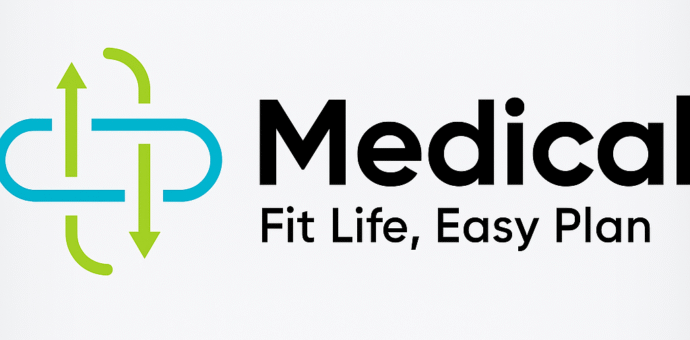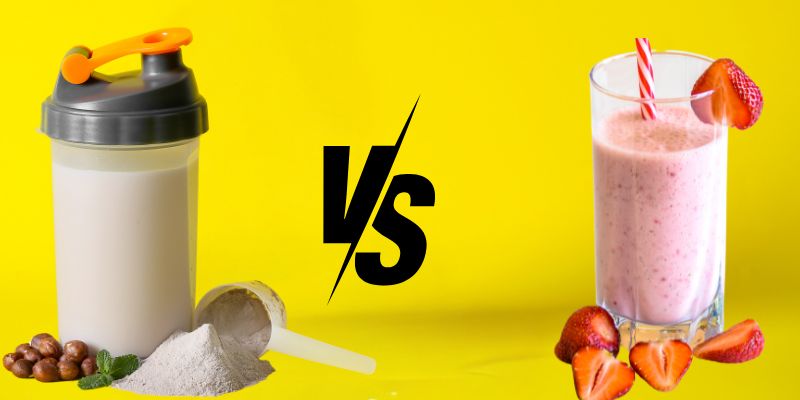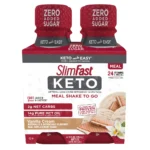Back-to-back calls, late trains, and inbox fires don’t leave much room for cooking. That’s why so many people weigh up meal replacement shakes vs protein shakes when they need fast nutrition without losing control of calories. Both can help—just in different ways. This guide breaks down the key differences, how to choose the right option for your day, and exactly how to put each to work so you stay fueled, focused, and in control.
Quick note: This article is educational, not medical advice. For general healthy eating guidance, the NHS “Eat well” hub is a great reference (external): https://www.nhs.uk/live-well/eat-well/
Why Busy Professionals Compare Meal Replacement Shakes vs Protein Shakes
Long days create three common problems:
-
Skipped meals lead to energy slumps and evening overeating.
-
Unplanned snacking blows past calorie targets.
-
Decision fatigue (“What should I eat?”) becomes a daily drain.
Both meal replacements and protein shakes reduce friction. One gives you a mini-meal in a bottle. The other adds protein power to whatever you’re already eating. Understanding the difference helps you pick the right tool for the right moment.
What’s the Actual Difference?
Meal replacement shakes
-
Designed to function as a complete mini-meal.
-
Typically include protein + carbs + healthy fats + fiber + vitamins/minerals.
-
Calories usually ~200–400 (depending on goals).
-
Goal: fullness, portion control, balanced nutrition when time is tight.
Protein shakes
-
Primarily protein (whey, casein, soy, pea); carbs/fats vary.
-
Calories can be very low (120–180) unless you add extras.
-
Goal: protein top-up for recovery/satiety alongside your normal meals.
In short, if you need a fast meal with defined calories and micronutrients, go meal replacement. If you just need more protein to steady hunger or support training, go protein shake.
Label Decoder (60-Second Scan)
When you’re glancing at the label between meetings, look for:
Meal replacement—look for:
-
Protein: 20–30 g
-
Calories: 200–400 (true “meal” range)
-
Fiber: 3–10 g
-
Added sugar: keep modest (<10 g is a common target)
-
Micros: vitamins/minerals listed
Protein shake—look for:
-
Protein: 20–30 g (whey/casein/pea/soy)
-
Calories: 120–220 (varies with mix-ins)
-
Added sugar: minimal
-
Optional add-ins: oats, fruit, nut butter if you want it to act more like a meal
Meal Replacement Shakes vs Protein Shakes: Which Fits Your Day?
When a meal replacement wins
-
Breakfast vanished again and the calendar is stacked.
-
You’re traveling and want predictable calories.
-
You’re managing weight and prefer fixed portions to avoid grazing.
When a protein shake wins
-
You ate lunch but need extra protein for satiety or training.
-
You’re building a meal (e.g., salad/wrap) and want protein without lots of calories.
-
You prefer to customize: add fruit, oats, or yogurt as needed.
Practical Use-Cases for a Real Workweek
Monday (desk-bound, no prep):
-
Breakfast: Meal replacement + ½ cup berries.
-
Lunch: Meal replacement + side salad (busy day).
-
Evening: Normal dinner.
Tuesday (gym day):
-
Post-workout: Protein shake (25–30 g).
-
Lunch: Normal meal.
-
Afternoon: Apple + nuts to bridge to dinner.
Wednesday (client travel):
-
Train/airport: Ready-to-drink meal replacement to skip fast-food queues.
-
Later: Protein shake if a long meeting pushes dinner.
Thursday (home office):
-
Lunch: Salad + protein shake to boost satiety without heavy calories.
Friday (social dinner):
-
Daytime: One meal replacement at lunch; plan protein-forward snacks to keep evening portions reasonable.
Want to compare flavors, calories, protein type, and fiber quickly? Try our Meal Replacement Finder to filter options in seconds. (Internal link)
Protein Types in Two Lines Each
-
Whey (milk): Fast-absorbing; great for mornings and post-workout.
-
Casein (milk): Slow-release; useful for long afternoons.
-
Soy/pea (plant): Dairy-free; often gentler on sensitive stomachs.
Building a “No-Think” Template (You Can Tweak Anytime)
Option A: Meal-replacement-first plan
-
Breakfast: Meal replacement (20–30 g protein, 200–400 kcal)
-
Lunch: Meal replacement + veg sticks
-
Dinner: Protein + two veg + small whole-grain/potato
-
Snacks: Greek yogurt, fruit + nuts, cottage cheese, or hummus + veg
Option B: Protein-first plan
-
Breakfast: Protein shake + banana
-
Lunch: Protein-forward wrap/bowl
-
Afternoon: Protein shake if meetings stack
-
Dinner: Normal balanced plate
Tiny upgrades that keep you full
-
Add chia seeds (fiber) to either shake.
-
Use 80–120 ml milk or fortified plant milk for creamier texture + calcium.
-
Keep added sugars modest to avoid late-afternoon crashes.
Meal Replacement Shakes vs Protein Shakes for Weight Management
If weight control is a goal, two things matter most: adherence and consistency.
-
Meal replacements shine for portion control—you know the calories up front. Fewer choices = fewer slip-ups.
-
Protein shakes shine for satiety support—they plug protein gaps in your regular meals so you don’t over-snack.
Many professionals use one meal replacement most days, and protein shakes as needed around workouts or long afternoons. It’s not either/or—it’s both, on purpose.
Troubleshooting (Because Weeks Aren’t Perfect)
“I’m still hungry at 4 p.m.”
-
Bump protein to 30 g and fiber to 5–10 g at lunch.
-
Add a fat source (nuts or peanut butter) to slow digestion.
“Evenings derail me.”
-
Use a meal replacement for lunch to save calories for dinner.
-
Pre-log your dinner or set a ‘kitchen closed’ cue (brush teeth early).
“Travel chaos.”
-
Carry a ready-to-drink meal replacement and a small tub of protein powder.
-
A foldable shaker + two dry packets live in your laptop sleeve.
Budget and Value: Getting the Most from Each
-
Meal replacements: You’re paying for complete nutrition + convenience. Great value when replacing takeaways or airport food.
-
Protein powders: Usually lower cost per serving. Best when you have fruit, oats, or yogurt handy and want to keep calories flexible.
For a quick refresher on general nutrition principles and portion balance, bookmark the NHS resource above (external): https://www.nhs.uk/live-well/eat-well/
Frequently Asked Questions
Can I have two meal replacements per day?
Yes—common on heavy workdays. On calmer days, drop to one and eat a normal meal.
Are protein shakes “enough” for a meal?
Usually no, unless you add carbs, fats, and fiber (e.g., oats, fruit, nut butter). Otherwise it’s a snack or supplement.
Plant vs dairy protein—does it matter?
Both can work. Choose based on tolerance, taste, and availability. Many people use whey in the morning and pea/soy later in the day.
Do I need to track calories?
Not strictly. Use meal replacements for built-in portion control, and protein shakes to steady hunger around normal meals. Adjust based on progress and hunger.
Putting It All Together (Keep It Simple)
When you weigh meal replacement shakes vs protein shakes, start with your calendar. If you need a fast, balanced meal, grab a meal replacement. If you need more protein around the meals you already eat, use a protein shake. Keep sugars modest, aim for 20–30 g protein, and add fiber for staying power. Most importantly, build a repeatable pattern you can follow on the busiest weeks—not just the easy ones.
Compare products and filter by calories, protein type, and fiber with our Meal Replacement Finder. (Internal link)
For evidence-based nutrition basics, use the NHS “Eat well” hub (external): https://www.nhs.uk/live-well/eat-well/



